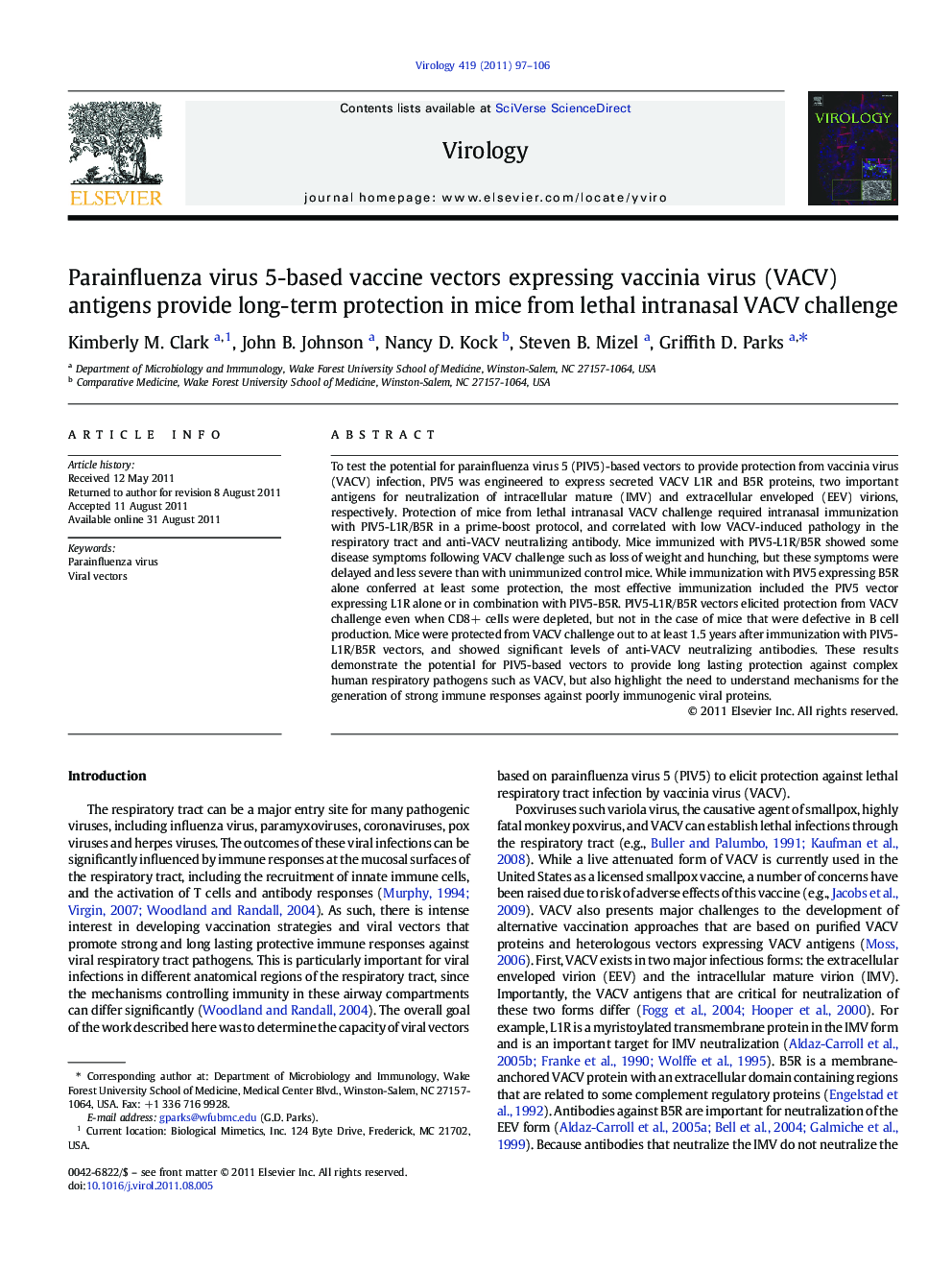| کد مقاله | کد نشریه | سال انتشار | مقاله انگلیسی | نسخه تمام متن |
|---|---|---|---|---|
| 3424501 | 1227226 | 2011 | 10 صفحه PDF | دانلود رایگان |

To test the potential for parainfluenza virus 5 (PIV5)-based vectors to provide protection from vaccinia virus (VACV) infection, PIV5 was engineered to express secreted VACV L1R and B5R proteins, two important antigens for neutralization of intracellular mature (IMV) and extracellular enveloped (EEV) virions, respectively. Protection of mice from lethal intranasal VACV challenge required intranasal immunization with PIV5-L1R/B5R in a prime-boost protocol, and correlated with low VACV-induced pathology in the respiratory tract and anti-VACV neutralizing antibody. Mice immunized with PIV5-L1R/B5R showed some disease symptoms following VACV challenge such as loss of weight and hunching, but these symptoms were delayed and less severe than with unimmunized control mice. While immunization with PIV5 expressing B5R alone conferred at least some protection, the most effective immunization included the PIV5 vector expressing L1R alone or in combination with PIV5-B5R. PIV5-L1R/B5R vectors elicited protection from VACV challenge even when CD8+ cells were depleted, but not in the case of mice that were defective in B cell production. Mice were protected from VACV challenge out to at least 1.5 years after immunization with PIV5-L1R/B5R vectors, and showed significant levels of anti-VACV neutralizing antibodies. These results demonstrate the potential for PIV5-based vectors to provide long lasting protection against complex human respiratory pathogens such as VACV, but also highlight the need to understand mechanisms for the generation of strong immune responses against poorly immunogenic viral proteins.
Journal: Virology - Volume 419, Issue 2, 25 October 2011, Pages 97–106